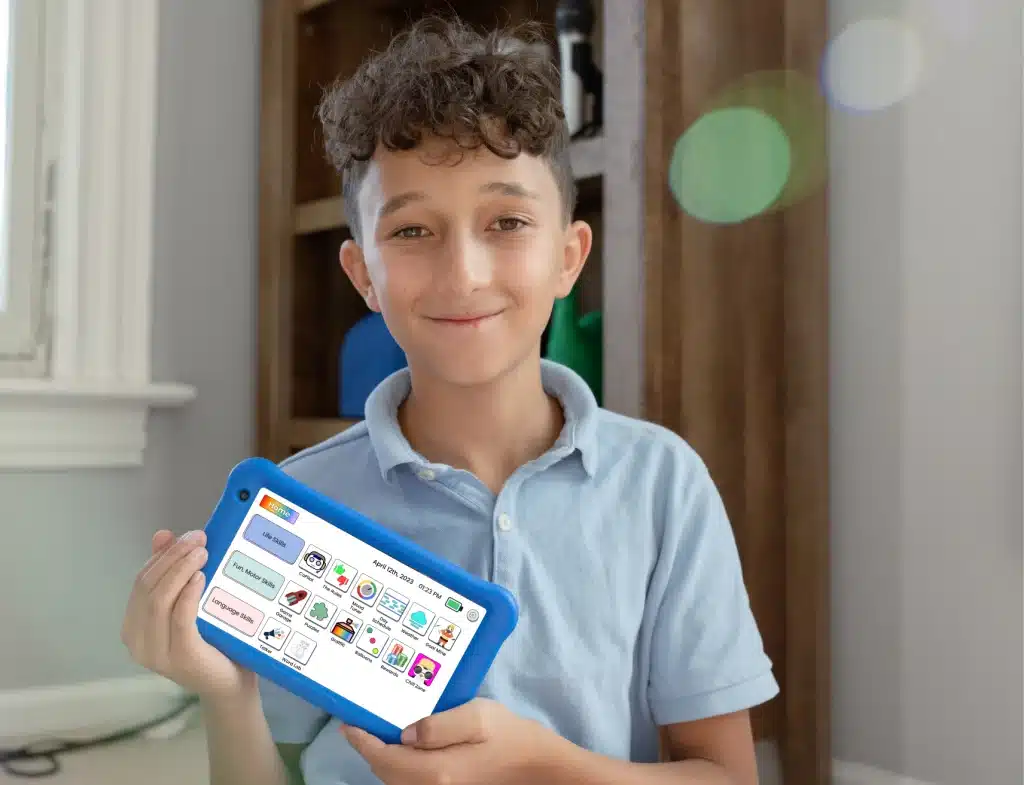When your child is caught in a loop of hair-pulling, nail-biting, or skin-picking, it’s more than just a quirky habit; they may be experiencing body focused repetitive behavior (BFRB). As you explore BFRBs, we’ll discuss how these behaviors are connected to neurodivergent kids, highlight practical steps for assessment, and provide a toolbox of strategies to support your child in managing these behaviors.
Table of Contents
Defining Body Focused Repetitive Behavior
Body focused repetitive behavior refers to a range of repetitive, self-grooming habits that can lead to physical harm and emotional stress. Some common BFRBs include:
- Hair-pulling (trichotillomania)
- Skin-picking (excoriation)
- Nail-biting (onychophagia)
- Lip or cheek biting

Interestingly, these behaviors can occur in both neurodivergent kids and their neurotypical peers. However, children with thinking and learning differences may be more prone to BFRBs. Triggers can include stress, anxiety, boredom, or even sensory stimulation. It’s essential to recognize that BFRBs are not a choice, but an automatic response to internal or external cues.
The Link Between BFRBs and Kids with Special Needs
Although the exact cause of BFRBs is still uncertain, there are several theories explaining their prevalence among kids with special needs. One possibility is that neurological differences may contribute to a higher likelihood of BFRBs. For instance, children with autism spectrum disorder (ASD) or attention deficit hyperactivity disorder (ADHD) often experience sensory sensitivities, leading to repetitive behaviors as a method of self-soothing.
Another factor to consider is the emotional aspect. Stress, anxiety, or frustration can exacerbate BFRBs in neurodivergent kids. These children may struggle with processing and expressing their emotions, which in turn increases their reliance on self-soothing behaviors like hair-pulling or skin-picking.

Read more: Repetitive Learning Method | Kids With ADHD
Recognizing and Assessing BFRBs in Your Child
To provide effective support for your child’s body focused repetitive behavior, it’s crucial to identify the specific behavior and understand its impact on their daily life. Here’s how you can assess the situation:
- Observe your child’s behavior, noting when and where it occurs.
- Talk to your child about the behavior if they’re willing and able. Encourage open communication and avoid blame or criticism.
- Consult a pediatrician or mental health professional to rule out any underlying medical conditions or secure a formal diagnosis.
Armed with a better understanding of your child’s BFRB, you can explore strategies to help them manage and reduce the behavior.
Read more: 5 Emotional Regulation Activities
Supporting Your Child in Managing BFRBs
There isn’t a one-size-fits-all solution for managing BFRBs, but several strategies can help your child cope. Here are some options to consider:

Read more: How Does ADHD Differ From Autism?
- Therapy: Cognitive-behavioral therapy (CBT) and habit reversal training (HRT) have proven effective in helping kids with BFRBs. These approaches teach your child to recognize triggers, develop alternative coping strategies, and enhance their overall emotional well-being.
- Medication: In some cases, medication may be to manage anxiety or other underlying conditions contributing to BFRBs. Always consult a healthcare professional before considering medication.
| At-home strategies | Promote relaxation through deep breathing exercises, mindfulness, or creative outlets like drawing or writing. Offer sensory alternatives, such as fidget toys or stress balls, to help redirect the urge to engage in BFRBs. |
| Parental support | Understanding, patience, and encouragement can go a long way in helping your child manage BFRBs. Create a judgment-free environment and be prepared to adapt your approach as needed. |

Give your kid an independent future. Goally has 15+ learning apps that teach life skills. There are NO web browsers, social media, or YouTube.
Our apps teach executive function, language, emotional regulation, finger dexterity skills, and more. It also 100+ video classes teaching social skills.
Moving Forward
Body focused repetitive behavior is a complex issue that affects many kids, particularly those with special needs. By understanding BFRBs, identifying triggers, and implementing appropriate strategies, you can support your neurodivergent child in managing these behaviors and enhancing their overall quality of life. Remember, every child is unique, and what works for one may not work for another. Patience, persistence, and a strong support system will encourage your child to overcome the challenges of BFRBs and find their path to wellness.
FAQ’s About Body Focused Repetitive Behavior
What is body-focused repetitive behavior? Body-focused repetitive behavior (BFRB) is a general term for a group of related disorders that involve a compulsive urge to damage one's own body. What are some examples of body-focused repetitive behaviors? Examples of BFRBs include hair pulling (trichotillomania), skin picking (dermatillomania), and nail biting. How can visual schedules help manage body-focused repetitive behaviors? Visual schedules can help by providing structure and routine, reducing anxiety and stress that often trigger BFRBs. Can emotional regulation apps assist kids with body-focused repetitive behaviors? Yes, emotional regulation apps can teach kids coping strategies, helping them manage the emotions that may lead to BFRBs. How can rewards be used to manage body-focused repetitive behaviors? Rewards can reinforce positive behavior changes and discourage BFRBs, especially when used as part of a comprehensive behavior modification plan.
This post was originally published on 05/16/2023. It was updated on 10/05/2023.

Goally
We help parents teach their kids life skills, like doing bedtime and morning independently. Backed by science, we incorporate evidence-based practices and expert-informed designs in all of our apps and content.





